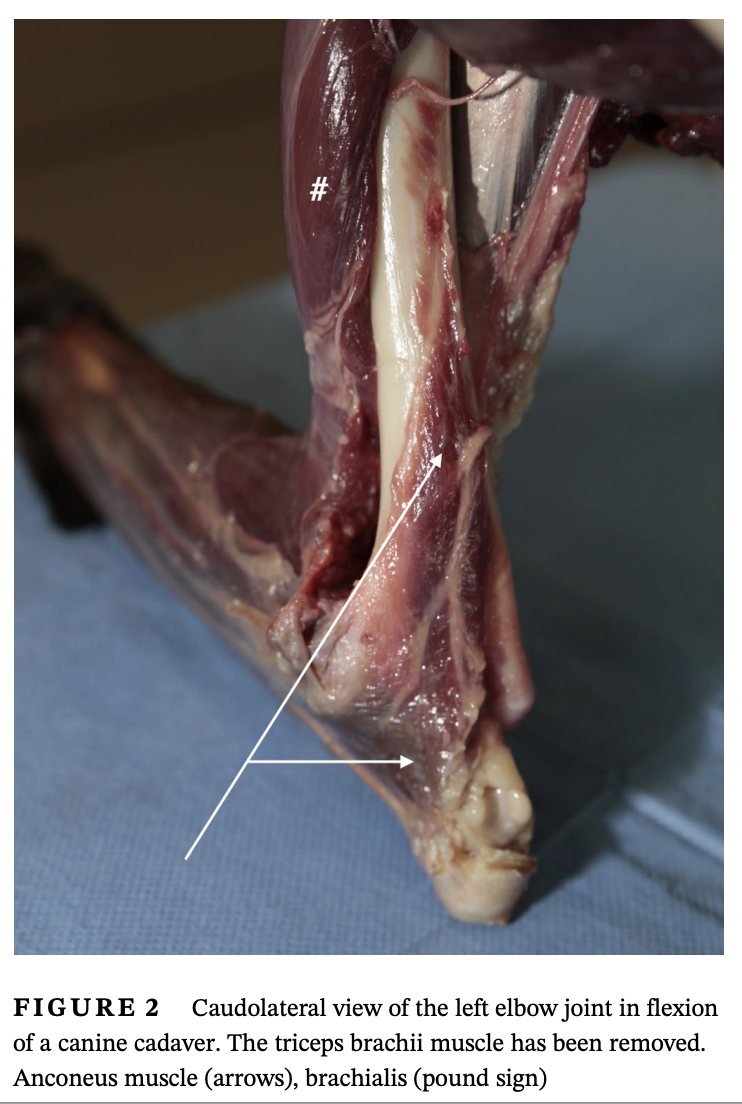Laurie's Blogs.
Jun 2024
Anconeus Muscle Injury
I randomly came across a journal article about an anconeus muscle injury in a juvenile greyhound. I’ve never heard of such a thing! When I teach anatomy, anconeus is one of the muscles that I say, “This is just a muscle that you need to know about if it comes up as a Trivial Pursuit question!” As in, ‘Never’!! So, I was shocked to discover that it could ever get injured! This lead me into a quick dive down the path of anconeus injuries.
Schaaf OR, Roennfeldt-Philp T, Webster NS. Anconeus muscle injury in a juvenile greyhound. Vet Surg. 2020 Dec;49(8):1648-1657.

Case study of an 11-month-old female greyhound. The dog presented with a 6-week history of mild left foreleg lameness. Moderate pain was noted by palpation over the proximolateral ulna and distolateral humerus and by maximal elbow flexion.
X-rays showed a laminar periosteal reaction on the caudodistal humerus. Ultrasonography revealed disorganization of anconeus muscle fibers, and focal mixed echogenicity were noted. CT revealed a thin rim of periosteal new bone on the caudodistal humerus.
Treatment consisted of 4 weeks of oral meloxicam. Confinement space and exercise were incrementally increased over 14 weeks.
More?
No! That’s it. ONE canine anconeus paper on all of pubmed!
So, just quick, let’s discuss Anconeus:
The anconeus muscle originates from the caudal aspect of the distal third of the humerus. This muscle courses laterally along the lateral supracondylar crest to the lateral epicondyle and medially to the medial epicondyle to occupy the olecranon fossa of the humerus. Its path then
continues laterally over the elbow joint capsule to insert on the proximal ulna, terminating at approximately the level of the radiohumeral joint.
Action: Resisting elbow flexion while the dog is standing.
Anything else?
The dog in the case study healed completely and was able to go back to racing. Treatment consisted of 4 weeks of oral meloxicam. Confinement space and exercise were incrementally increased over 14 weeks
Take aways?
I guess the anconeus muscle CAN be injured after-all! Now we all know!
Until next time…
Cheers! Laurie


